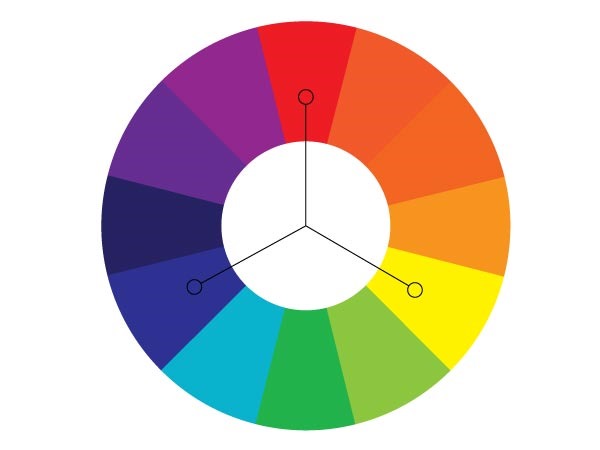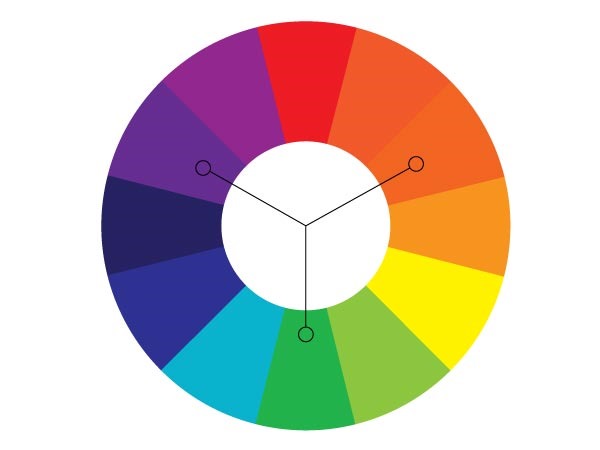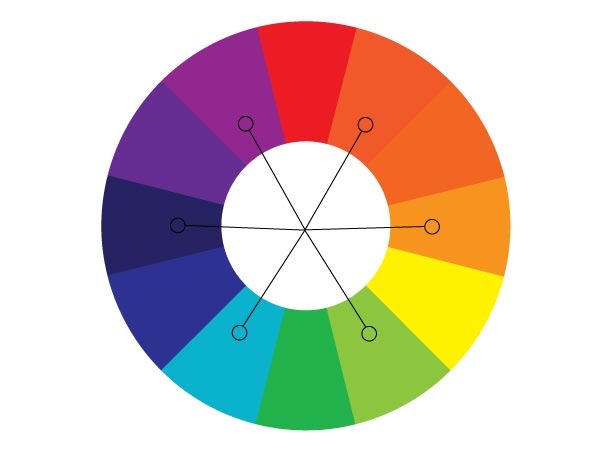Color matching is a timeless classic in many industries. The non-woven masterbatch industry is no exception. Today, Xiaobian will share the color matching tutorial.
1. The composition of color
All colors are derived from the three "primary colors" of red, yellow and blue.

The primary colors are mixed in two to two to obtain three secondary colors, namely "intermediate color" green orange purple.

The primary color is mixed with the intermediate color or the intermediate color and the intermediate color are mixed to form more and more colors, which are called "multicolor".

Finally, the system consisting of three primary colors, three intermediate colors and six complex colors is collectively referred to as the twelve color ring (colorwheel), which is also the basis for learning color matching.
2. Color matching
The existence of the twelve-color ring is not just a display, it cleverly establishes a color matching system.
Common color combinations include: monochrome matching, approximate color matching, complementary color matching, scattered complementary color matching, and triangular matching color matching.
(1) Monochromatic
This does not need to be explained, that is, only a combination of colors.
(2) complementary colors
Complementary colors refer to those colors on the color wheel that are at an angle of 180°. Putting them together will create a contrasting effect. Such as blue and orange, red and green, yellow and purple.
Complementary colors have a very strong contrast, and in the case of high color saturation, you can create a lot of very stunning visual effects. But remember, using complementary colors in the text is terrible.
The swatch in the director's work "Angel Loves Beauty" by Jean-Pierre Rene is a typical red and green complementary color.
(3) Dispersing complementary color matching (split-complementary colors)
The difference between a complementary complementary color and a complementary color is that the complementary complementary color is not the color directly opposite the target color. For example, the complementary color of yellow should be purple, but we take the two colors next to the purple - purple and blue purple.
This not only has a strong contrast, but also makes the color richer. Dispersing complementary color matching is a good choice for beginners.
The combination of red, dark blue and light blue perfectly contrasts the contrast and the picture is very harmonious and beautiful.
(4) analog colors (analogous colors)
Any three adjacent colors on the color ring are called similar colors. It is generally believed that they will be harmonious when put together.
Similar colors are a great way to choose a similar color, creating rich textures and layers in the same shade.
(5) Triadic colors
The three characters are a set of colors that are extracted by creating an equilateral triangle on the color circle, which makes the color of the work richer and more balanced.
To successfully use the three-color system to create a harmonious effect, you need to carefully balance the colors—use only one primary color, and the other two colors.
3. The meaning of color
(1) Basic color matching - strong
The most powerful combination of colors is the thrill of thrill and the desire to dominate, but it is always inseparable from red; no matter how the colors are combined, red is absolutely indispensable.
Red is the ultimate source of strength - strong, bold, and extreme. The color combination of power symbolizes the most intense feelings of human beings: love, hate, love, hatred, and full expression of emotions.
At the time of advertising and display, a powerful color combination is used to convey a strong message such as vitality and eye-catching, and always attracts everyone's attention.
(2) Basic color matching - unrestrained
By using one of the most well-known colors like vermilion, or one of its many bright and dark colors, you can show your energy and enthusiasm in general design and graphic design. The central red-orange color combination is the easiest to create a vibrant, warm feeling.
This combination of colors makes people feel youthful, energetic, lively, and naughty, often appearing in advertisements to showcase their energetic personality and lifestyle.
Combining red orange with its complementary color, blue-green, is a powerful, easy-going, lively, and active effect that is effective when applied to fabrics, advertising, and packaging.
(3) Basic color matching - soil
The dark, vivid red-orange is called terracotta. We use it to combine and design colors that are bright, warm, vibrant and earthy. This color has a faint warmth, like a polished, polished brass. When combined with white, it will be like a natural light.
The color of the earth has the personality of young people who love to laugh and love, which is reminiscent of leisurely and comfortable life. Because it is part of the analog design, this warm, earthy shade creates an interesting mix of colors. For example, the design of the decoration appeared in the western United States.
(4) Basic color matching - romantic
Pink represents romance. Pink is the addition of a different amount of white to the red, creating a bright red. Like red, pink can cause interest and pleasure, but in a softer, quieter way.
Romantic design, by using pink, lavender and peach (slightly yellow pink), will make people feel soft and elegant. Combined with other bright pastels, the red color is reminiscent of the dreamy June day and a bouquet of summer flowers.
(5) Basic color matching - rich
To express the intensity and richness of color can be achieved by combining a powerful color and its dark complementary color.
For example, red is black in red, like the vintage of the French vineyard, symbolizing wealth. Brandy red and deep forest green can be rich if used with gold.
These dark, ornate colors are used on a wide variety of woven fabrics, such as leather and corrugated crepe, to create dramatic, unforgettable effects. These colors give people a feeling of wealth and status.
4. Color contrast application skills
In the use of color, the complementary color, the three primary colors or the three colors are juxtaposed together to produce a vivid and intense visual experience. This method of applying color is called color contrast. The advantage of using color contrast is that the picture is vivid and lively. In the design of graphic advertising, the design related to children's products is often used.
However, in the design of print ads, if the color contrast is not used properly, it will produce a vulgar, boring or chaotic effect. For example, if the blue and orange colors of the complementary colors are higher, let us put the blue and orange patches of the same area. Together, it will produce a glaring feeling, very uncomfortable.
In the design process, the contrast color is used, and the harmonious relationship of the contrast colors is required to make the design color harmonious. There are several ways to compare the hue and the sum.
1 Change the purity or brightness of the contrast hue, and add one of the colors to the achromatic color to achieve coordination.
2 Use achromatic or gold or silver to make color blocks or lines between the contrasting blocks, so that the contrasting color can also produce a blending effect.
3 Change the area difference of the contrasting color blocks, and compare the area with one of the colors to produce a visual effect of a little red in the green plexus, so that the color coordination can be achieved and the subject matter or design theme can be strengthened.
The use of contrasting colors in graphic design mainly reflects the color opposition and unified visual effects by processing the elements of color, area, distance and other factors to form the dynamic and static factors of the form of the work. Make the design theme more vivid and outstanding.
5.Adjacent color adjustment and application skills
Adjacent color blending refers to a coordinated and uniform visual effect produced by two or more adjacent colors arranged in a hue loop. In print advertising design, the use of adjacent hue is the key to producing color harmony.
Such as green and yellow green, yellow can produce a yellow-green tone;
Green, blue-green, and blue can produce a blue-green tone;
Orange and red, red and orange can produce red-orange tones;
Orange and yellow-orange and yellow can produce yellow-orange tones;
Purple and blue, blue and purple to produce a basket of color;
Purple and red, red and purple match red and purple.
The matching design of these six colors is the secret of color adjustment and application in the field of graphic design.
The method of forming a uniform color tone in the adjacent color configuration is widely used in the field of graphic advertisement design. Its advantage is that the design picture color is unified and coordinated, and contains subtle changes in color in the coordination. The disadvantage is that the picture is prone to confusing effects, but as long as you pay attention to the contrast between the colors, you can avoid this problem.
The use of adjacent tones and colors is also widely used in the design of print ads, such as the packaging design and poster design of different flavors of the same brand of dairy beverages (lime, strawberry, apple, grape). The color of the raw materials in line with the raw materials creates a strong recognition, which is visually convenient for consumers to recognize, while also psychologically giving consumers a sense of trust in product quality.
6. The use of color rhythm and rhythm
Rhythmic beauty is a repetitive, repetitive, continuous art form reproduction; rhythm beauty is a kind of undulating, gradual, interlaced, changing and organized rhythm. The relationship between them is: rhythm is the condition of rhythm, rhythm is the deepening of rhythm.
The aesthetic form of rhythm and rhythm is used in the field of graphic advertising design. The expressive power of color not only depends on the contrast and harmony of color, but also the expression of color rhythm and rhythm, so that the design color can be vivid.
The rhythm and rhythm of color is produced by the continuity and gradation of color, the undulation and interlacing of colors. The design of color continuity can be continuous of adjacent colors, continuous of the same color; the gradual design of color can be the gradual change of hue, brightness and purity.
The continuation and gradation of color makes it easy to create a sense of harmony while giving a sense of rhythm. The undulation and interlacing of colors can be accomplished by the principle of color block scattering and reconstruction, which is expressed in the graphic design as the main image and the auxiliary image.
7. The general rule of color matching
The roles of color are generally divided into five types: main color, color matching, background color, fused color, and accent color.
Generally speaking, in the case of color matching, if you want to highlight the "protagonist", you should make use of the difference in brightness, saturation, and chromatic aberration, making the "lead" more eye-catching and more attractive, as long as you use the powerful colors. By creating different contrast pictures and controlling the stability and tension of the picture, the publicity of the "leading role" can be successfully improved.
The color used to set the main color is called color matching. When choosing color matching, the key point is to choose the color to be opposite to the main color, and whether there is any color matching, the overall impression of the picture is very obvious.
In a picture that lacks tension, if you add color, you can create a completely different feeling, so you must grasp the balance of adjustment.
The background color not only changes the impression of the picture, but also plays a crucial role in controlling the tone. Therefore, when we choose the background color, we must first understand the design purpose and design concept.
The color design in print advertising design has regular rules. At the same time, there is no fixed method in design and application. Designers should combine rationality and sensibility in the process of design, constantly break through existing theories, and constantly explore new rules of color design. Design a world-class print ad.
If the color can be used reasonably in the design, it will produce more appropriate visual effects and create different atmospheres. In addition, the contrast of colors can be seen everywhere in life, and the coordinated color contrast is especially important, because the coordinated color contrast will produce a peculiar effect and make people pleasing.
In short, the development and application of design color has important theoretical and practical significance for the development of contemporary design, and the use of color will be more and more concerned.
Non-woven masterbatch industry is inseparable from color matching, because the color requirements of non-woven fabrics are not the same according to different needs, so it is also important to learn color matching and develop novel and suitable colors.

Yancheng Ruize Masterbatch Co., Ltd. mainly produces and operates: Non-woven masterbatch, Non-woven antibacterial masterbatch,antistatic masterbatch, polypropylene filament masterbatch, Polypropylene filament masterbatch, Non-woven masterbatch, polypropylene spunbond non-woven masterbatch, Polypropylene fiber masterbatch, chemical masterbatch, Non-woven masterbatch, polypropylene masterbatch, Soft hydrophilic masterbatch.
- How does polypropylene masterbat
- The Textile Chemicals Branch of
- The use and storage of Polypropy
- Important developments have emer
- Yancheng Ruize Color Masterbatch
- "Craftsmanship for inheritance,
- Ruize masterbatch made a brillia
- "Craftsmanship Weaving Dreams, j
- Remembering history and passing

